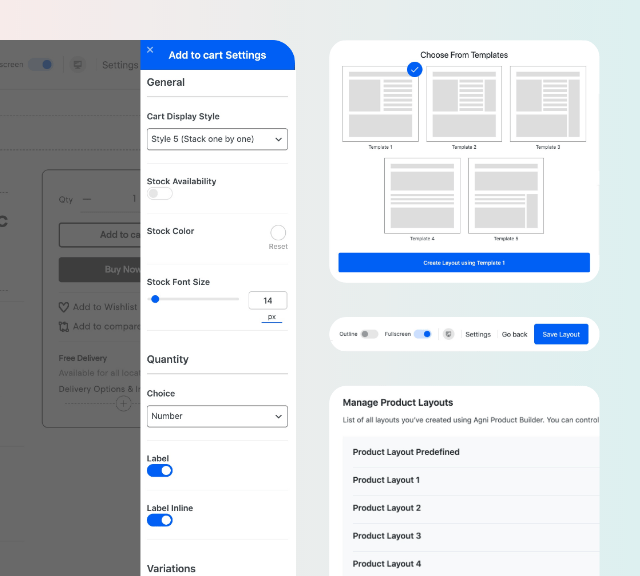Content
- Statistical analyses
- The Effects of Alcohol on Mental Health
- What’s the Lifespan of an Alcoholic?
- Alcohol consumption and risk of cardiovascular disease, cancer and mortality: A prospective cohort study
- Life Expectancies Of Those With Alcohol Use Disorder (AUD)
- Does Alcohol Make You Sick? You May Be Allergic
She also supports a holistic philosophy through her understanding that recovery requires care for the physical, mental, emotional, and spiritual aspects of each patient. Assuming leadership responsibility in 2013 as the Clinical Nurse Manager, addiction treatment has become Melinda’s passion. Dolly joined Hemet Valley Recovery Center & Sage Retreat in February 2020 as an RADT. Her experience with HVRC initially included Sober Living House Manager, Resident Tech, and Chemical Dependency Intern. In early 2022, Dolly received her CADCI certification, with a specialization as a Women’s Treatment Specialist. At that time, she assumed the position of Chemical Dependency Counselor/ Case Manager.
A woman can consume fewer alcoholic beverages and still experience the ill effects comparable to a man who drinks more. As discussed before, alcohol consumption (combined and serving-separated) has a relatively positive correlation with life expectancy. Infant mortality and death rate are of course negatively correlated (the more/quicker people die, the more it will lower the average). This analysis examines the pattern of association between alcohol consumption and the average life expectancy of various countries, explaining the possible correlations and offers insight into why these correlations might be present. If you are an alcoholic or a person who regularly abuses alcohol it can severely decrease your life expectancy and longevity of living a healthy life. This is not only because of the short and long-term health consequences, but also due to the risky behavior that can cause mortality or dangerous events to occur.
Statistical analyses
At HVRC, we offer a full continuum of care, from acute medical detoxification to sober living programs. We are licensed as a Chemical Dependency Rehabilitation Hospital (CDRH), enabling us to provide more services than most addiction treatment centers. Symptoms can include digestive issues, jaundice, and brain and nervous system problems such as fainting and numbness in the extremities. Any perceived increase in mortality risk is likely to be due to lifestyle factors preceding abstinence or because of smoking tobacco.
What alcohol does to your body after the age of 40?
Drinking too much alcohol over a long time can: Lead to some kinds of cancer, liver damage, immune system disorders, and brain damage. Worsen some health conditions such as osteoporosis, diabetes, high blood pressure, stroke, ulcers, memory loss, and mood disorders.
Some research even suggests that people who have two or more drinks a day are 35% more at risk of having a stroke than someone who has less than half a drink a day. Joining HVRC in 2011 as a graduate of the Body Mind College in San Diego, CA, Midge has been practicing as a Holistic Health Practitioner since 1993. She also holds certifications in Reiki, Hypnotherapy, Neurolinguistics and Cranio-Sacral Therapy. Affiliated for 7 years with the Chopra Center for Well Being as a seminar facilitator, Midge taught Meditation, Creating Health, and Balanced Well Being.
The Effects of Alcohol on Mental Health
When you drink alcohol, your body breaks it down into a chemical called acetaldehyde (a-suh-TAL’-duh-hide). Acetaldehyde damages your DNA and prevents your body from repairing the damage. DNA is the cell’s “instruction manual” that controls a cell’s normal growth and function.
Among them, 114 (35.40%) had an alcohol use disorder or risky alcohol consumption in their history. Subgroup 2 (84 individuals, 18.79% of the alcohol abstainers) ever had one or more criteria for an alcohol or drug dependence or abuse fulfilled in life before. Subgroup 3 (14 individuals, 3.13% of the alcohol abstainers) had none of the disorders of subgroup 2 but had practiced alcohol risky drinking in the time before 1 year prior to the baseline interview. Subgroup 6 (39 individuals, 8.72% of the alcohol abstainers) had none of the risk factors of subgroups 2 to 5 but were current daily smokers of 19 or less cigarettes per day.
What’s the Lifespan of an Alcoholic?
We found that among the alcohol-abstinent study participants at baseline (447), there were 405 (90.60%) former alcohol consumers. Of the abstainers, 322 (72.04%) had met one or more criteria for former alcohol or drug dependence or abuse, alcohol risky drinking, or had tried to cut down or to stop drinking, were daily smokers, or self-rated their health as fair to poor. Among the abstainers with one or more of these risk factors, 114 (35.40%) had an alcohol use disorder or risky alcohol consumption in their history. Another 161 (50.00%) did not have such an alcohol-related risk but were daily smokers. The 322 alcohol-abstinent study participants with one or more of the risk factors had a shorter time to death than those with low to moderate alcohol consumption. The Cox proportional hazard ratio (HR) was 2.44 (95% confidence interval (CI), 1.68 to 3.56) for persons who had one or more criteria for an alcohol or drug use disorder fulfilled in their history and after adjustment for age and sex.
However, fewer people stop to think about the real cost of long-term alcohol abuse including the worrisome relationship between drinking and life expectancy. Bill joined the HVRC family in February 2015; he started his Career in the profession of Chemical Dependency Treatment in 2006 and has been a California State Certified Counselor with a CADCII credential since 2008. Bill has extensive experience working with adults, adolescents, special populations and their families, and has worked in various therapeutic settings including Detox, Outpatient and Residential Treatment.
Increased mortality risks among abstainers might largely be explained by previous alcohol or drug problems, risky drinking, daily smoking, and self-rated health as fair to poor. The findings speak against recommendations to drink alcohol for health reasons. Evidence suggests that people who abstain https://ecosoberhouse.com/article/what-is-the-life-expectancy-of-an-alcoholic/ from alcohol have a higher mortality rate than those who drink low to moderate amounts. For the study participants who had claimed to never having drunk alcohol in their life before, no increased HRs compared to low to moderate alcohol consumers were found after adjustment for age and sex.
More than 380 people die every day from excessive alcohol use, according to the Centers of Disease Control and Prevention (CDC). We hear this sentence over and over again as beginner statisticians and data scientists. This small analysis uncovers this topic with the help of R, and simple regressions, focusing on how alcohol impacts health.
In short, women’s alcohol abuse can have more drastically severe consequences than men’s. Alcohol-induced liver disease refers to liver damage caused by excessive alcohol consumption. When you drink more alcohol than the liver can process, it can become severely damaged. Many people know of the short-term consequences of drinking too much such as hangovers, drunk driving accidents, drunken injuries, alcohol blackouts, and alcohol poisoning.
- In Sweden, mortality rate ratios from all causes of death increased in men but was unchanged in women during the entire study; mortality rate ratio from suicide increased in both men and women (Table (Table33).
- Even a simple slip-and-fall incidents may have deadly results for someone who is under the influence of alcohol.
- This contradicts the idea that consuming low to moderate amounts of alcohol confers health benefits.
- With a management background, Kristal brings with her many skills including an advanced understanding of computer technology, administrative organization, multi-tasking and excellent customer service.
- In the aggregate data, neither age- nor sex-specific alcohol consumption data were available.
- Sign up to get tips for living a healthy lifestyle, with ways to fight inflammation and improve cognitive health, plus the latest advances in preventative medicine, diet and exercise, pain relief, blood pressure and cholesterol management, and more.
- Her experience with HVRC initially included Sober Living House Manager, Resident Tech, and Chemical Dependency Intern.
In all people who have AUD, mortality is relatively higher in women, younger people and people in treatment for addiction (4). However, comprehensive mortality data over time of patients with AUD are not available from Nordic countries. Our findings support a dose relation between alcohol drinking and time to death. Asking for alcohol consumption and using simple questions were sufficient to predict mortality 20 years later.
Does Alcohol Make You Sick? You May Be Allergic
The study described above examined how much alcohol consumption might be too much. Light drinkers (those consuming one to three drinks per week) had the lowest rates of cancer or death compared to those drinking less than 1 drink per week. Alcohol addiction is a severe disease that can significantly impact a person’s health.








































